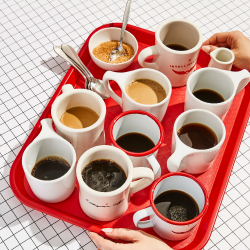Welcome to an extraordinary journey through the annals of coffee history, where we retrace our steps to the very beginnings of café culture, to the legendary Kiva Han. A gem nestled in the heart of the bustling Ottoman Empire, this coffee house was not just a place; it was an experience, a phenomenon that marked the birth of the world’s café culture.
Often overshadowed by the modern espresso bars and the chic coffee lounges, Kiva Han’s story brims with cultural nuances and historical significance. Today, we delve into this mesmerizing tale that beautifully intertwines with the legacy of Turkish coffee, an ever-enduring symbol of hospitality and friendship.
Every sip of coffee you take today is, in essence, a tribute to this coffee shop’s transformative journey. This journey is a testament to the power of a humble beverage that transcended boundaries, brewed conversations, and brought people together under one roof, setting the stage for the worldwide coffee culture we cherish today. Welcome to the pioneering world of Kiva Han, the groundbreaking coffee shop that started it all. Let’s embark on this fascinating adventure, where every stop is a rendezvous with history, culture, and the irresistible aroma of freshly brewed coffee.
Kiva Han: Key Takeaway
- Origins and Influence: Kiva Han, located in Istanbul during the Ottoman Empire, is recognized as the world’s first coffee shop. Its introduction of coffee and the associated cultural norms significantly shaped the global coffee industry and coffeehouse culture.
- Coffee Culture Catalyst: This distinctive coffee shop was more than a place to enjoy coffee. It was a social hub that nurtured intellectual discourse, cultural activities, and trade, setting the standard for the modern coffee shop concept and its social implications.
- Global Impact: The popularity of this coffee house led to a surge in the global coffee trade, paving the way for the expansion of coffee cultivation and the development of the global coffee market.
- Cultural Heritage: This distinctive coffee house influence extends into the realms of art and literature, underscoring its cultural significance. It has inspired countless artists and writers, who have immortalized it in various creative expressions.
- Enduring Legacy: The legacy of this coffee shop continues to resonate today. From the tradition of Turkish coffee brewing to the ethos of modern coffee shops, Kiva Han’s footprints can be traced to our contemporary coffee culture. Visiting the original Kiva Han site and partaking in coffee traditions are ways of honoring its rich heritage.
Origins of Kiva Han
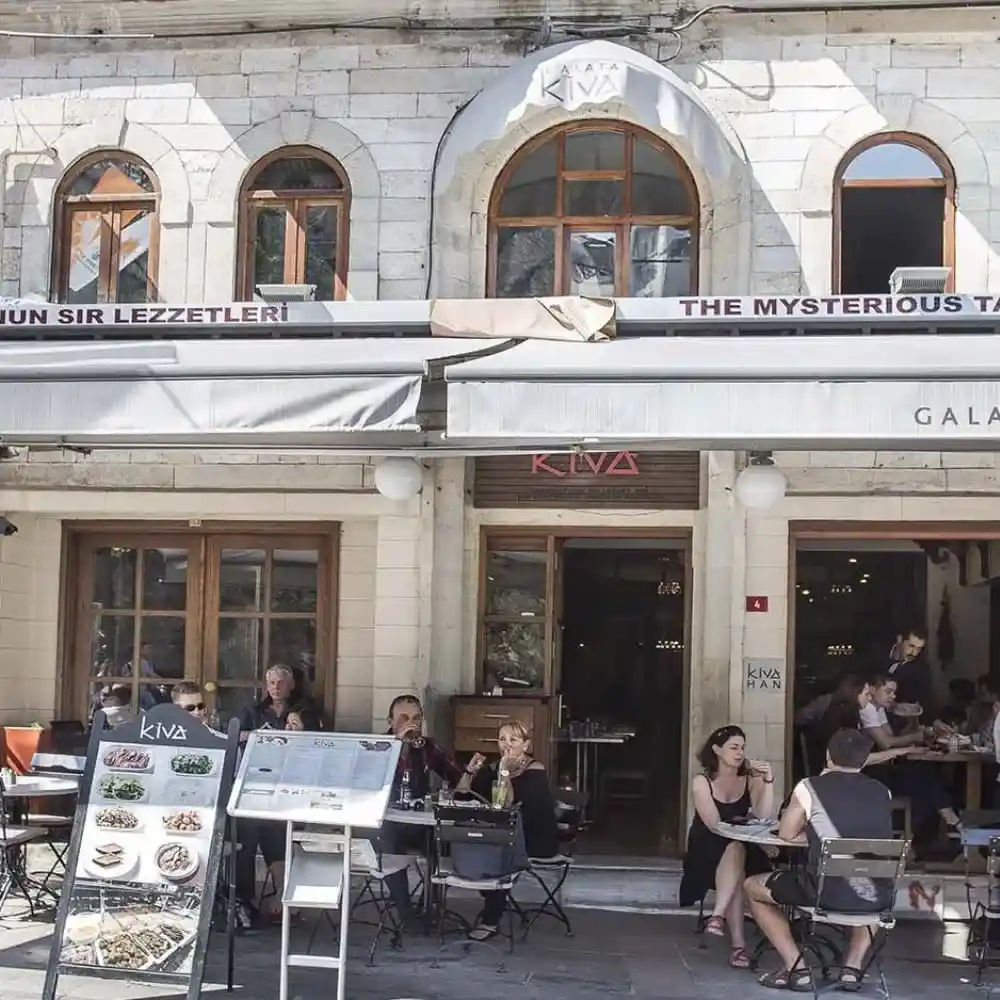
Let us embark on a historical journey to the roots of the world’s first coffee house. Our exploration begins in the grandeur of the 15th century Ottoman Empire, in the vibrant city of Istanbul where the revolutionary concept of a coffee house was born – Kiva Han. Understanding its origins requires us to delve not just into the circumstances of its creation but also into its profound cultural significance and remarkable contributions to the burgeoning coffee trade and industry. Let us trace back the riveting tale of this unique coffee shop, navigating through the uncharted waters of a cultural phenomenon that forever reshaped our relationship with the humble coffee bean.
The Birth of Kiva Han in the Ottoman Empire
The historical odyssey of this coffee house starts in the heart of the vibrant Ottoman Empire, in the bustling streets of Istanbul in the late 15th century. The origin of the term “Kiva Han” itself offers insight into the roots of this iconic establishment. This coffee house emphasizes the original intent of these establishments as places for travelers and locals alike to gather and rest while enjoying a warm cup of coffee.
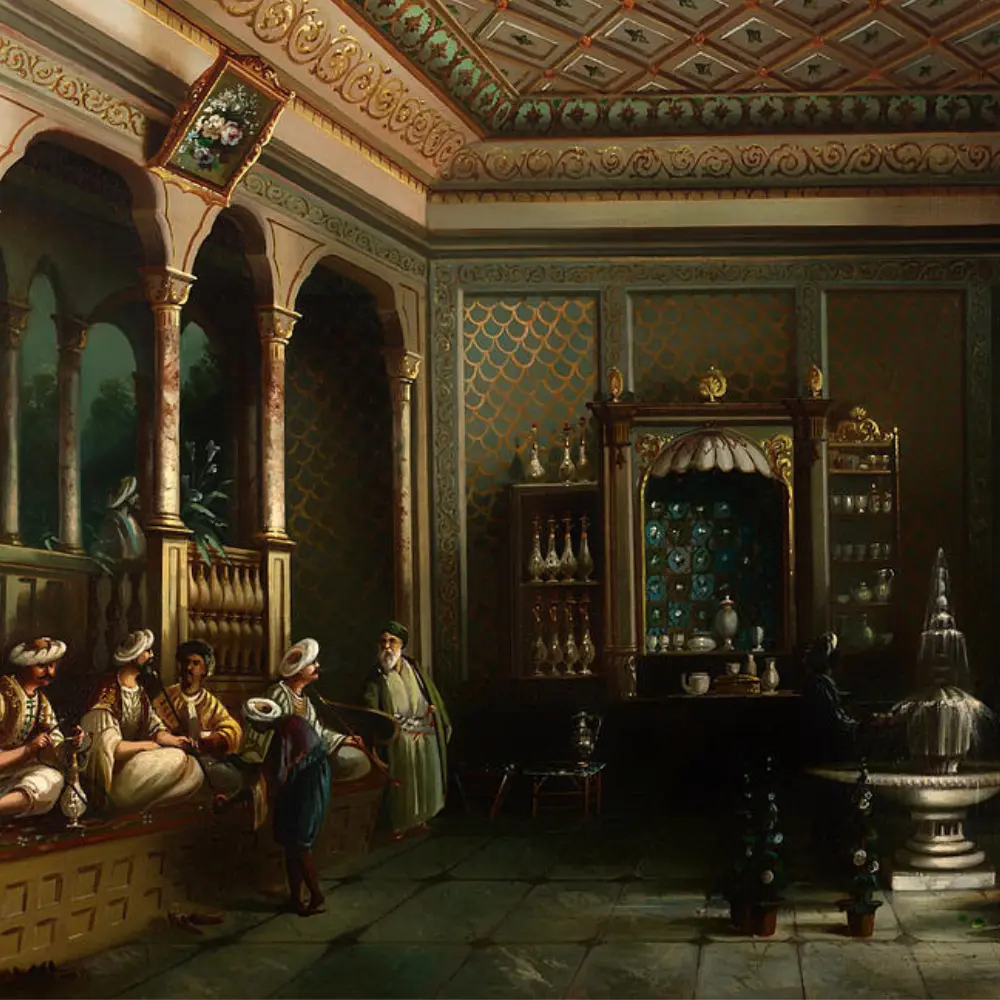
The first documented evidence of this coffee shop dates back to 1475, marking it as the world’s first coffee house. This makes it even older than the renowned English coffee houses that would only come into existence two centuries later. Ottoman travelers returning from Yemen, where coffee had been cultivated since the 14th century, introduced the caffeinated beverage to Istanbul. The concept of the coffee house was a natural evolution, a response to the growing demand for this newly introduced luxury.
The Cultural Significance of Kiva Han
From a cultural perspective, Kiva Han was more than a simple coffee house; it was a hub for social interaction, a platform for intellectual discussions, and a center for entertainment. Here are a few highlights:
- Social Interaction: This distinguishable coffee house became a place for people to gather, exchange news, and discuss ideas. It was a place where society came together, irrespective of social or economic status.
- Intellectual Forum: Intellectuals and scholars often frequented this distinctive coffee house, turning it into an informal center for lively discussions, debates, and knowledge exchange.
- Entertainment: Entertainment was an integral part of the Kiva Han experience. From music and dance performances to shadow plays, fortune readings and storytelling, this coffee shop served as a popular venue for various forms of Ottoman-era entertainment.
Did you know?
Turkish coffee fortune reading, or ‘tasseography’, is an age-old tradition where symbols in coffee grounds reveal insights about your future.
Kiva Han’s Contribution to Coffee Trade and Industry

This coffee house was instrumental in the development of the coffee trade and industry. Its popularity contributed to the increasing demand for coffee, which in turn led to the expansion of coffee cultivation and trade.
- Promoting Coffee Consumption: As the popularity of this coffee shop grew, so did the consumption of coffee. The desire to recreate the Kiva Han experience led to coffee becoming a staple in many Ottoman households.
- Impact on Trade: The demand for coffee significantly increased trade between the Ottoman Empire and Yemen, from where the coffee beans were initially imported. This surge in trade contributed to the establishment of numerous coffee houses across the empire, laying the foundation for the global coffee industry we see today.
- Innovation and Coffee Preparation: This coffee house played a significant role in popularizing Turkish coffee, known for its unique preparation method. The finely ground coffee beans were boiled in a Turkish coffee pot (cezve), usually with sugar, and served in a cup where the grounds were allowed to settle. This method, now synonymous with Turkish coffee, owes its widespread adoption to the prominence of this unique coffee shop. (1)
Influence of Kiva Han on Coffee Culture
As we sip our coffee, whether it’s a frothy cappuccino, a potent shot of espresso, or a comforting mug of filter coffee, do we ever pause to consider the origins of our coffee culture? Our next stop on this historical voyage brings us face-to-face with the profound influence of this distinctive coffee house on global coffee culture. With its rich legacy and timeless charm, Kiva Han was not just a coffee shop; it was a revolutionary establishment that reshaped social dynamics, architectural aesthetics, and the world’s relationship with coffee. As we peel back the layers, we discover the indelible marks that this coffee house left on society, architecture, and our beloved coffee rituals. Join us as we delve into the various facets of Kiva Han’s influence, appreciating how this unique coffee house from the 15th century continues to resonate in our modern café culture.
The Social Impact of Kiva Han
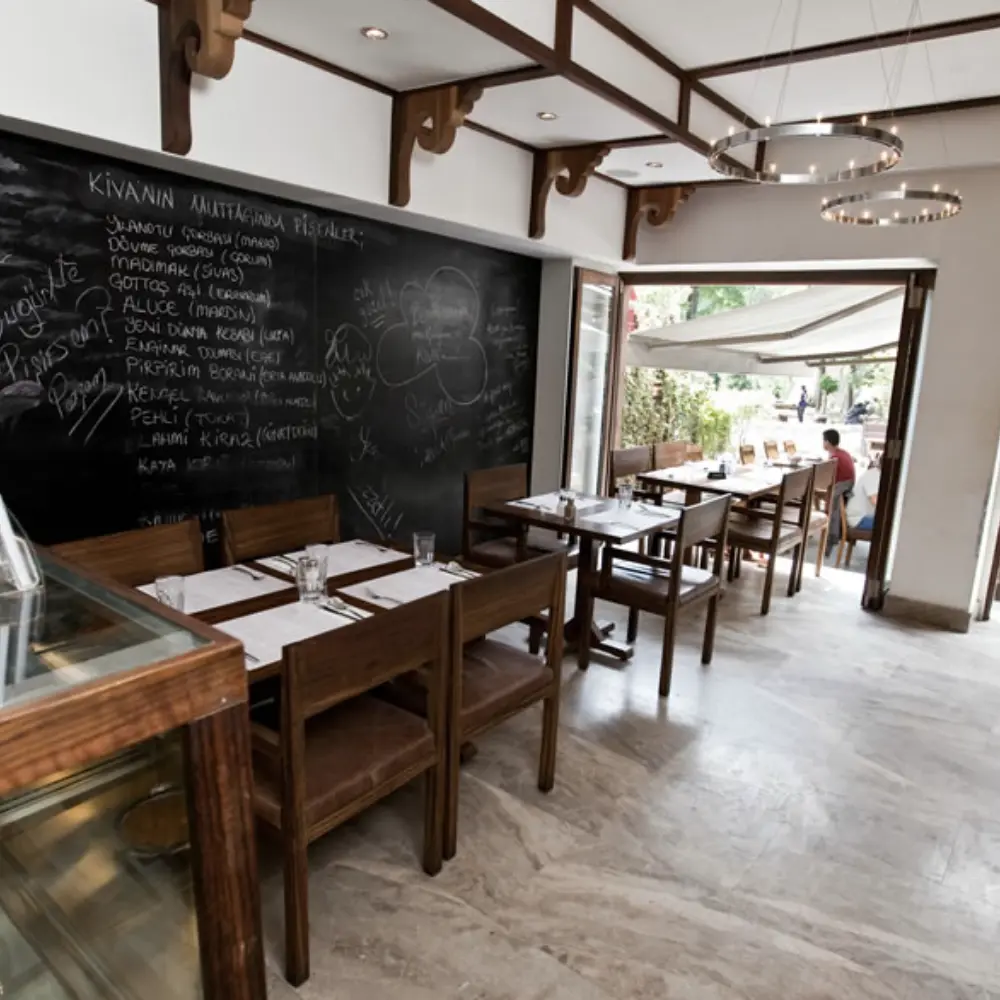
This distinguishable coffee house carved out a significant niche for itself within the social fabric of the Ottoman Empire, eventually going beyond its borders and influencing global coffee culture.
- Democratic Space: This coffee house emerged as an egalitarian space where societal hierarchies dissolved over cups of coffee. People from different walks of life — from scholars to artisans, from merchants to common citizens — congregated in this shared space, engaging in vibrant discussions and debates.
- Intellectual Hub: Over time, this coffee shop became known as a hub for intellectual discourse. Here, scholars would spar over philosophical theories, poets would recite their latest works, and musicians would perform their compositions. These establishments essentially functioned as social and cultural hotspots.
- Birthplace of Coffee Rituals: The coffee house also played a pivotal role in birthing the coffee rituals that are still cherished today. The preparation, service, and enjoyment of coffee evolved into a ceremonious affair, which would later spread across the world.
The Architectural Footprint of Kiva Han
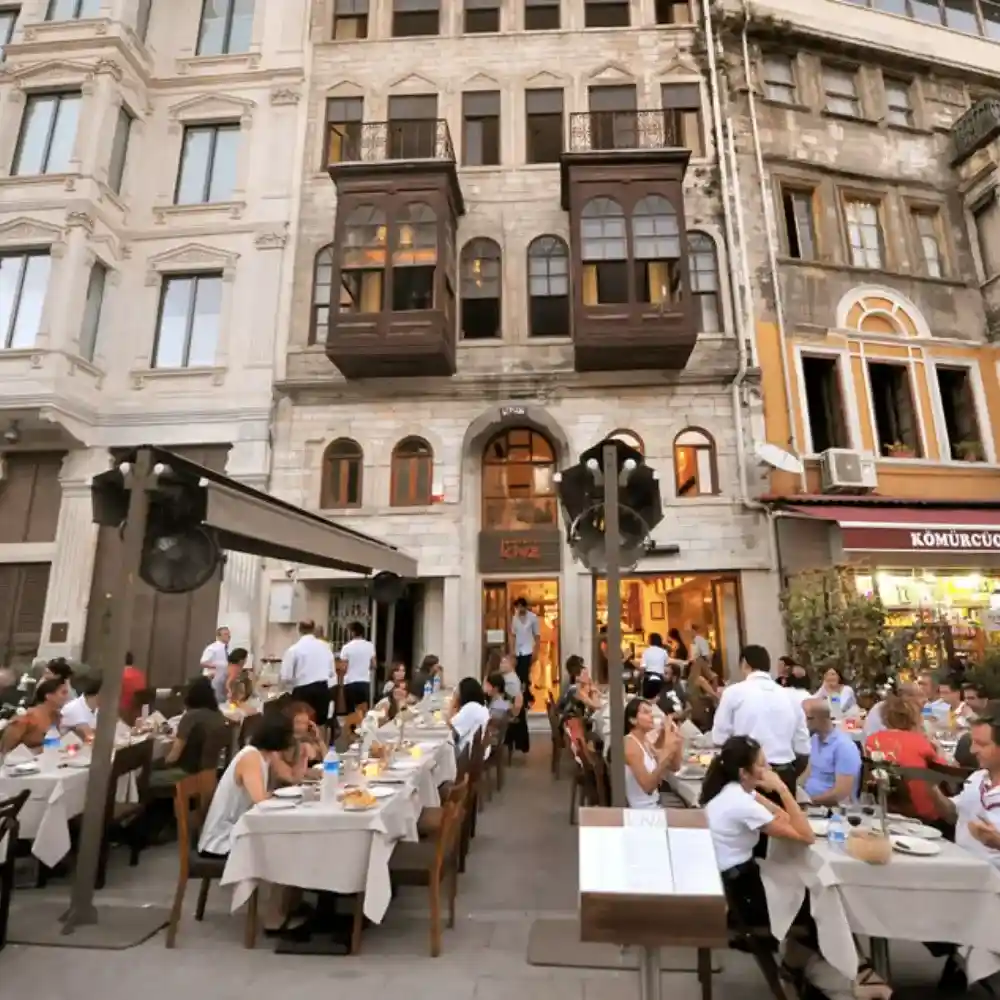
The design and layout of this coffee house were not just a reflection of the architectural trends of the time but also paved the way for the aesthetic we now associate with coffee shops worldwide.
- Design Elements: The architecture of this coffee shop embodied the Ottoman style. Traditional features included high ceilings, elaborate interior decoration, and courtyard layouts. The use of rugs and cushions created a warm, welcoming ambiance.
- Layout: The open-plan layout of this coffee house fostered a sense of community and encouraged free communication among patrons, reinforcing the democratic ethos of these establishments.
- Modern Influence: The spatial organization, architectural elements, and ambiance of this coffee shop have influenced the design of modern coffee shops, from independent cafés to global chains.
Role of Kiva Han in Popularizing Coffee

This coffee house played a seminal role in popularizing coffee, transforming it from a regional beverage to an international favorite.
- Introduction of Coffee: This coffee shop facilitated the introduction of coffee to a wider audience. With its growing popularity, coffee quickly became a staple in Ottoman homes and gradually found its way across Europe and eventually the rest of the world.
- Turkish Coffee: As mentioned before, Kiva Han was instrumental in spreading the unique method of Turkish coffee preparation. The strong, unfiltered coffee served in small cups has now become an internationally recognized method, epitomizing the rich Turkish coffee culture.
- Coffeehouse Culture: This coffee house initiated the global coffeehouse culture, which has now become an integral part of our social fabric. As discussed earlier, the concept of a space for socialization, intellectual discourse, and entertainment, all centered around coffee, was pioneered by Kiva Han. This model continues to thrive and evolve in the modern world, with coffee shops playing an integral role in our daily lives.
Kiva Han vs. Modern Coffee Shops
In the journey of coffee history, comparing the first coffee house, Kiva Han, to the modern coffee shops of today, opens a fascinating dialogue of evolution, adaptation, and innovation. This comparison allows us to explore the timeless essence of coffee shops while acknowledging how far we’ve come. As we place the age-old Kiva Han and today’s cafés side by side, we delve into their similarities, reflecting the enduring appeal of the coffee house concept. We also shed light on the evolution of coffee shops, highlighting the changes that have unfolded over the centuries. Yet, through all these changes, the influence of this coffee house continues to resonate strongly in our contemporary café culture. Embark on this enlightening journey, which juxtaposes the traditional and the modern, the past and the present, and offers a newfound appreciation for your favorite coffee spot.
Similarities Between Kiva Han and Today’s Cafes

As we draw parallels between Kiva Han and modern coffee shops, several striking similarities emerge, highlighting the enduring influence of this 15th-century establishment:
- Space for Socialization: Both Kiva Han and today’s coffee shops serve as popular gathering spaces. They offer an environment conducive to social interactions, be it catching up with friends, conducting informal meetings, or simply people-watching over a cup of coffee.
- Cultural and Intellectual Hub: Just like Kiva Han, modern cafés often function as cultural and intellectual hubs. They host book readings, poetry slams, live music, and more, creating an ambiance that nurtures creativity and intellectual discourse.
- Coffee Rituals: The ritualistic aspect of coffee drinking, which was popularized by this coffee house, is still very much a part of today’s coffee culture. The care and attention devoted to the process of brewing, serving, and enjoying coffee remain central to the café experience.
Evolution of Coffee Shops Since Kiva Han

From the traditional Kiva Han to the modern café, the evolution of the coffee shop reflects changes in society, culture, and consumption patterns:
- Variety and Innovation: Today’s coffee shops offer a vast variety of coffee preparations, catering to a broad spectrum of tastes and preferences. This is a significant departure from Kiva Han, which primarily served Turkish coffee.
- Ambiance and Design: While this distinctive coffee house bore the unmistakable imprint of Ottoman architecture, modern coffee shops feature diverse designs, from minimalist and industrial to cozy and eclectic, reflecting contemporary aesthetic trends.
- Technological Integration: Modern coffee shops have embraced technology, offering free Wi-Fi, mobile ordering, and digital payments, which is a major leap from the traditional operations of Kiva Han.
Kiva Han’s Undying Influence on Current Café Culture
Despite the evolution of coffee shops over the centuries, Kiva Han’s influence remains visible in several aspects of current café culture:
- Community Building: Just like Kiva Han, modern coffee shops play a pivotal role in fostering community interactions. They create a sense of belonging and act as local gathering spots.
- Promotion of Coffee: Kiva Han’s tradition of celebrating coffee in all its forms lives on in today’s cafés. Whether it’s educating customers about different coffee beans or hosting coffee-tasting sessions, modern coffee shops continue to promote coffee culture.
- Cultural Activities: The practice of hosting cultural and intellectual activities, initiated by this unique coffee house, continues to be a key feature of many coffee shops today, furthering the notion of coffee shops as cultural hubs.
The Legacy of Kiva Han
The legacy of this coffee house is immense and pervasive, seeping into multiple aspects of our everyday life. Its contribution goes beyond just popularizing coffee to influencing social norms, economic trade, and even the realms of art and literature.
How Kiva Han Shaped the Global Coffee Market

Kiva Han played a pioneering role in shaping the global coffee market as we know it today:
- Popularizing Coffee: As discussed earlier, this coffee shop was instrumental in introducing coffee to a broad public, ultimately leading to a surge in its popularity. As coffee consumption spread from the Ottoman Empire to Europe and beyond, it laid the foundation for the global coffee market.
- Influencing Coffee Trade: As mentioned before, the demand for coffee, sparked by the popularity of this coffee shop, significantly influenced trade routes and commerce. The increasing consumption of coffee spurred the expansion of coffee cultivation, initially in Yemen and later in other parts of the world.
- Birth of the Coffeehouse Culture: By creating a unique environment where coffee was not just consumed but also celebrated, this coffeehouse planted the seeds of the global coffeehouse culture. This culture, now embraced worldwide, plays a significant role in driving the growth of the coffee industry.
Kiva Han in the Eyes of Coffee Connoisseurs
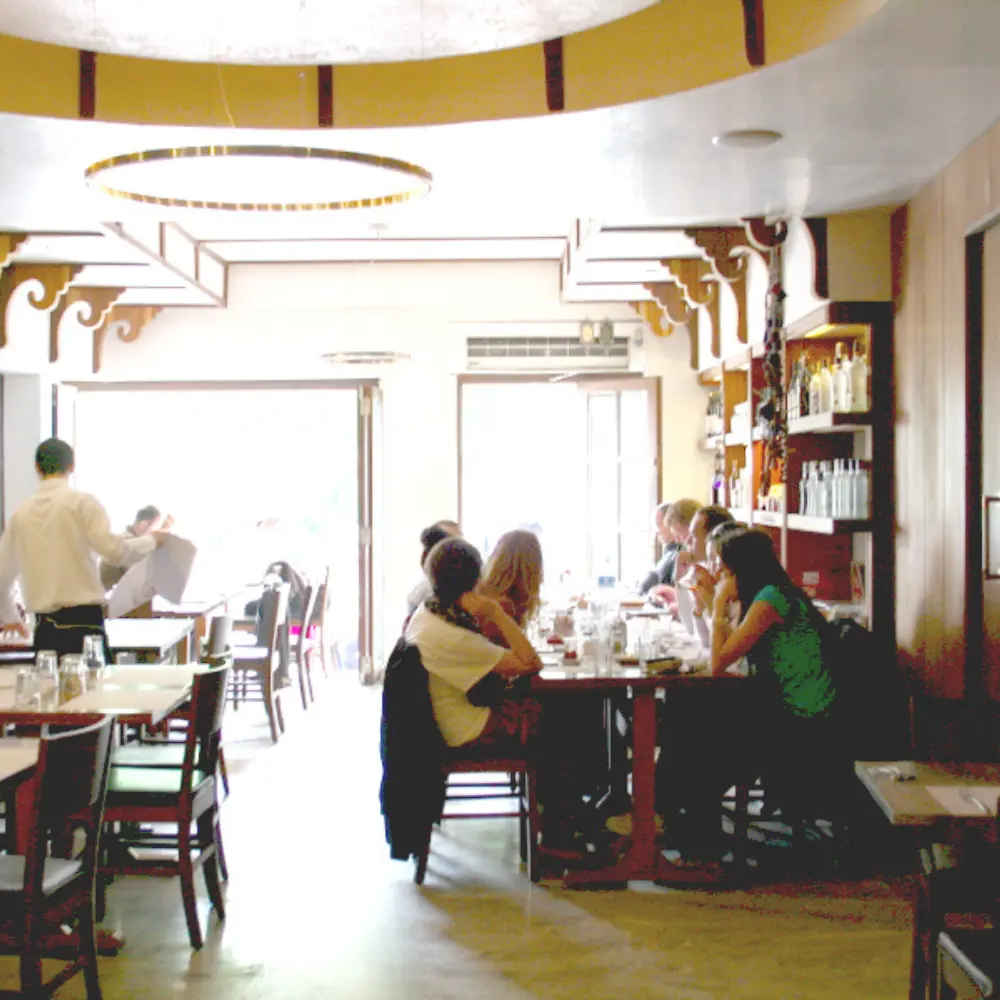
For coffee connoisseurs, This distinguishable coffee house holds a special place, symbolizing the rich history and tradition of coffee:
- Origin of Coffee Culture: Coffee connoisseurs recognize this coffee house as the birthplace of coffee culture. Its influence on coffee preparation methods, particularly Turkish coffee, is a topic of interest and admiration among coffee enthusiasts.
- Symbol of Heritage: This coffee shop is seen as a symbol of heritage and tradition, representing the timeless appeal of coffee. It serves as a reminder of the journey of coffee from a regional luxury in Yemen to a globally cherished beverage.
- Inspiration for Coffee Exploration: The story of this coffee house often serves as inspiration for coffee lovers to explore different brewing methods, coffee varieties, and cultures, fostering a deeper appreciation for the beverage.
Kiva Han’s Impact on Coffee-based Art and Literature

The influence of this distinctive coffee shop extends into the realms of art and literature, reflecting the deep cultural significance of the coffee house:
- Inspiration for Artists: The vibrant atmosphere of this coffee house has inspired many artists over the centuries. It has been captured in numerous paintings, photographs, and other art forms, showcasing its unique architecture and the social dynamics within its walls.
- Featured in Literature: This coffee house has been mentioned and featured in various literary works. Authors have used it as a backdrop for their narratives or as a symbol representing social commentary, highlighting the cultural significance of the coffee house.
- Coffee in Art and Literature: More broadly, the popularization of coffee by Kiva Han has led to the beverage becoming a recurrent theme in art and literature. From paintings depicting coffee rituals to literary works centered around coffeehouses, the influence of this coffee shop resonates through these creative expressions.
Tracing Kiva Han’s Footsteps: A Cultural Journey
To truly appreciate the rich legacy of this coffee shop, one must embark on a cultural journey that traces its enduring footsteps. This journey leads us to the original site where it all began, delves into age-old coffee traditions, and recognizes the modern tributes paid to this iconic institution.
Visiting the Original Kiva Han Site Today
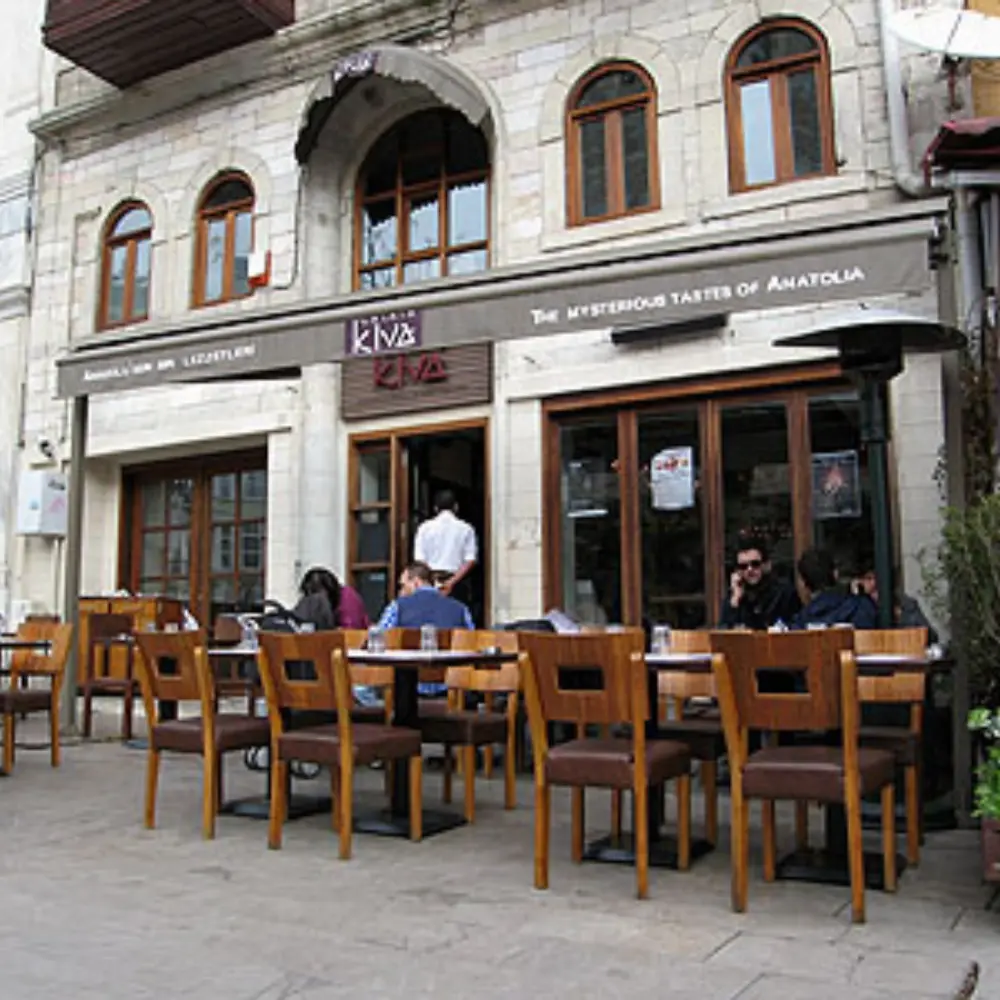
A trip to the original site of this coffee house, located in Istanbul, Turkey, is akin to stepping into a time machine that transports you back to the 15th century.
- Historical Significance: The site is a cherished piece of history, embodying the vibrant cultural, economic, and social activities that flourished around the coffee house.
- Architectural Marvel: Although the original building no longer exists, visiting the site gives one a sense of the grandeur of Ottoman architecture that once defined this unique coffee shop.
- Immersive Experience: Nearby, numerous traditional Turkish coffee shops thrive, offering visitors an immersive experience of the world of Turkish coffee. Sampling a strong, rich cup of Turkish coffee here, one can’t help but feel connected to the legacy of this coffee house.
Honoring Kiva Han in Coffee Traditions
Several coffee traditions practiced worldwide serve as an homage to this coffee house and its pivotal role in shaping coffee culture:
- Turkish Coffee Rituals: The tradition of brewing and serving Turkish coffee, a method that this coffee shop popularized, is a way of honoring its legacy. The intricate preparation process, from finely grinding the beans to brewing it in a special pot called ‘cezve’, is a testament to this coffee house influence.
- Coffeehouse Culture: The global coffeehouse culture itself is a tribute to this unique coffee shop. The idea of gathering in a shared space to enjoy coffee, engage in intellectual discourse, or partake in cultural activities is a direct extension of the ethos that this coffee shop propagated.
Modern Tributes to Kiva Han

In the modern era, numerous tributes to this coffee house serve as a testament to its enduring impact:
- Coffee Brands: Several coffee brands, particularly in Turkey, have named their products after this special coffee house as a tribute to its legacy.
- Art and Literature: Contemporary artists and writers frequently reference this unrepeated coffee shop in their works, underscoring its lasting influence on coffee culture and social life.
- Festivals and Events: Coffee festivals and cultural events often celebrate this one and only coffee house for its historical significance and contribution to the global coffee scene. Such events help keep the memory of this coffee house alive, ensuring that its story continues to be told to new generations of coffee lovers.
Conclusion
As we conclude our exploration of this distinctive coffee shop, the groundbreaking coffee shop that started it all, we cannot help but marvel at its enduring legacy. This iconic establishment, nestled in the heart of the Ottoman Empire, was more than just a coffee shop. It was a vibrant hub of social interaction, intellectual discourse, cultural activity, and economic trade, forever changing our relationship with coffee.
From popularizing the unique art of brewing Turkish coffee to laying the foundation of the global coffeehouse culture, Kiva Han’s impact extends far beyond its original locale. The tradition of gathering over coffee, immersing oneself in intellectual conversations, or simply savoring a moment of solitude with a cup of coffee owes much to this pioneering institution.
The story of this coffee shop serves as a fascinating testament to the historical and cultural richness of our everyday cup of coffee. So, the next time you sip your Turkish coffee or step into your favorite coffee shop, remember to appreciate the deep roots and rich heritage that trace back to Kiva Han.
From the bustling streets of Istanbul in the 15th century to our local cafés and home kitchens, the journey of coffee, ignited by this unique coffee house, is a stirring tale of cultural exchange, innovation, and shared human experience. And that’s what makes each cup of coffee more than just a beverage, but a sip of history, a moment of connection, and a celebration of a centuries-old tradition.
FAQ
How did Kiva Han contribute to shaping coffee culture worldwide?
Kiva Han popularized the coffeehouse concept and Turkish coffee brewing methods, sparking a global coffee culture that made coffee a social and intellectual catalyst.
What distinct similarities and differences exist between Kiva Han and modern coffee shops?
Both Kiva Han and modern coffee shops serve as social hubs, encouraging community and discourse. However, while Kiva Han upheld traditional Turkish brewing methods, modern shops often feature a variety of global coffee styles and innovative brewing techniques.
In what ways does Kiva Han's legacy continue to influence the global coffee industry today?
This coffee shop legacy influences the global coffee industry through the enduring coffeehouse culture, popularization of Turkish coffee, and its integral role in the growth of the global coffee trade.
How is the original Kiva Han site commemorated in the modern era?
The original Kiva Han site, although no longer housing the original building, is a significant historical site in Istanbul, and nearby coffee shops continue the tradition of Turkish coffee, serving as a living tribute to this coffee shop's legacy.




